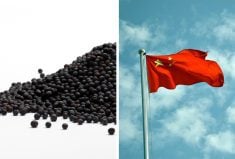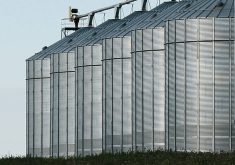WINNIPEG — Western Canadian farmers are seeing higher quality wheat crops this year, which will meet pent up demand within the market.
However, producers might not reap the rewards as much as they would like, a market analyst says.
Wheat buyers will be looking for better quality and higher protein wheat since Canada disappointed on some of those fronts last year, said Neil Townsend, director of market research at G3 Global Grains.
“But on the other hand, when there’s more of it around, you see that the premium for protein and the premium for quality gets kind of narrowed, and that’s probably the situation that we’re in, in Canada.”
Read Also

Canada and China discuss disputes over canola and EVs, says Ottawa
Senior Canadian and Chinese officials discussed bilateral trade disputes involving canola and electric vehicles on Friday, Ottawa said, but gave no indication of any immediate breakthrough.
He said demand still exists, but this year might not be as profitable as farmers would hope because supply looks like it will be fairly heavy.
Townsend said assumptions that this year will be higher quality and protein is primarily based on anecdotal reports because harvest is 30 percent done in the Prairies.
“Looks like it’s going to be a better quality profile than last year. So far the results would support that,” said Townsend.
Crops are not seeing as much adversity during harvest as they did last year because many farmers have been able to harvest crops, dry them and maintain quality.
“In parts of the West, obviously drought has an influence on smaller yields, but the drought also is positive in terms of quality when you get a smaller crop,” he said.
Statistics Canada predicts that this year’s production will be around 24.6 million tonnes, compared with last year’s 29.3 million tonnes.














